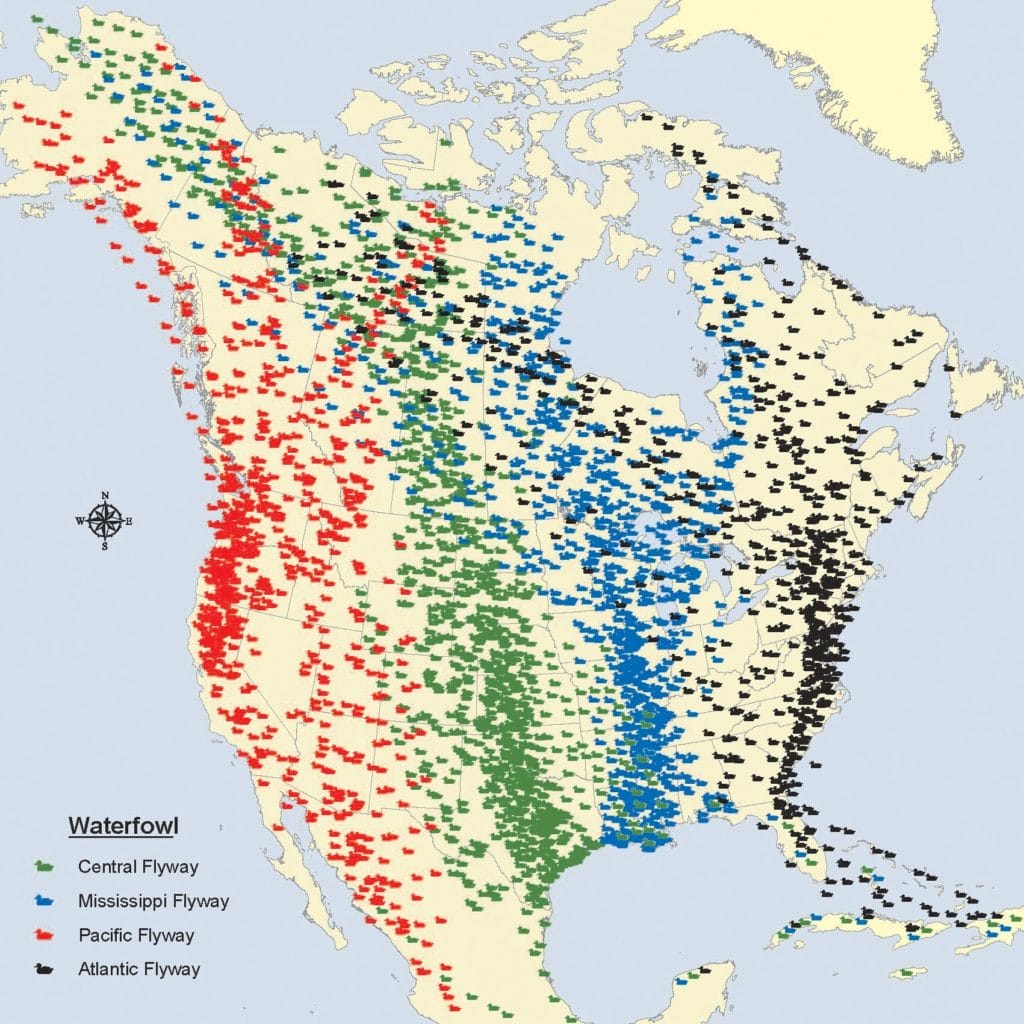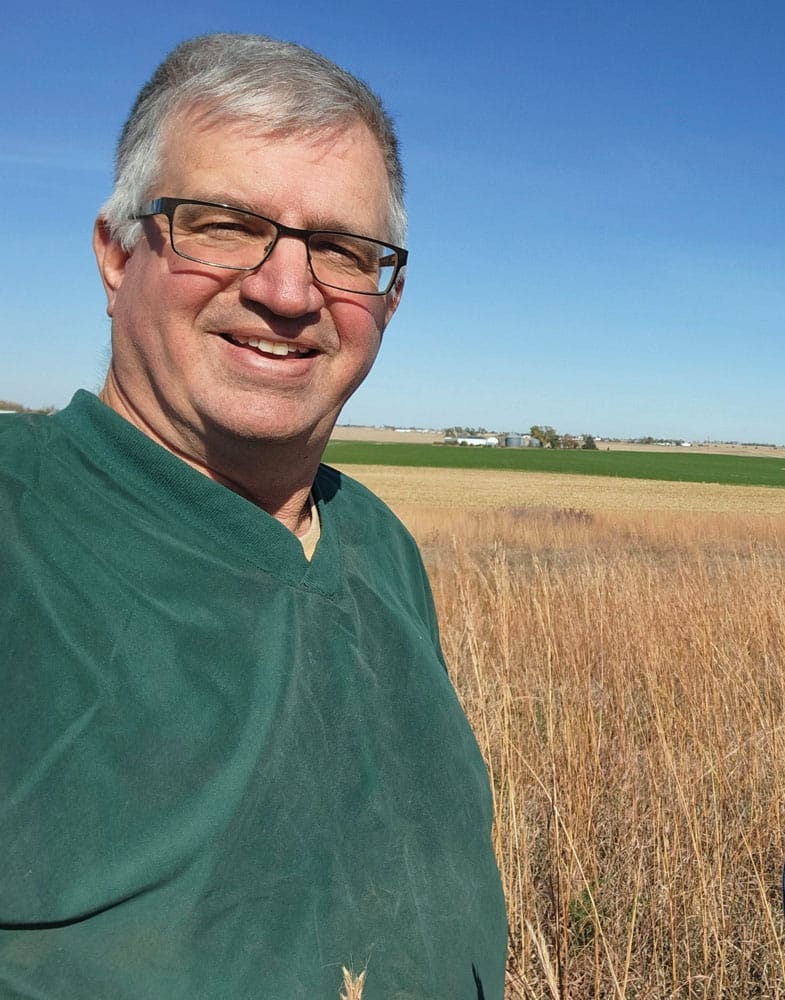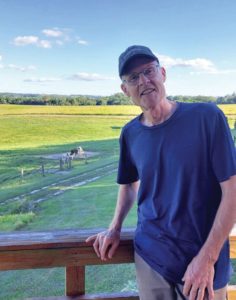Fields of Feathers
By using cover crops, rotational grazing and extended rotations, farmers are helping their soil – and making space for birds.
When Aaron Lehman first noticed cars slowing down on the rural road bordering his 500-acre farm of corn, soybeans, oats and hay in northern Polk County, Iowa, he became concerned. Just what were all these drivers doing? Even his neighbors noticed and were equally stumped as cars crawled by Aaron’s farm.
“It’s an unfortunate reality that people come out to these rural roads to dump trash, and I was worried that was what all the strange activity was,” Aaron says. “Then I noticed they seemed to be looking at the farm itself.”
In spring 2018, as he was driving home, Aaron finally had a chance to approach one of these cars. Rolling down the window, he asked what the driver was seeing out in his fields, worried there may be an issue he was unaware of. The answer surprised (and delighted) him as the driver raised up his binoculars and excitedly said he was looking at all the birds on the farm. The driver even got out to show Aaron a phone app called eBird Mobile, where he and others had been recording the species they saw as they passed Aaron’s farm.
“It was the funniest thing,” Aaron recalls. “All that worry and curiosity and everyone was just bird-watching!”
A few hours away, in Allamakee County, Tim Welsh also operates a 500-acre farm. He purchased the first 300 acres in 1984, and added 200 adjoining acres in 2019. Originally a mix of pasture, corn, soybeans, oats and hay crops, Tim and his family have spent the last 40 years diligently converting the land to improved pasture, perennial crops and woodland. Half of the land Tim bought in 2019 was already established in the federal Conservation Reserve Program, which Tim has left in place.
“I purchased the first farm from my father’s cousin, but the farm itself has been in the family since the 1870s,” Tim says. “My dad’s cousin originally ran mainly beef cattle, allowing them to graze widely across the pastures and woodlands. We’ve since established a rotational grazing practice on the pastures and removed cattle from most of the woodlands.”
As part of his management, Tim has been working to re-establish oak savanna and prairie. His efforts have included planting hardwoods like walnut and oak, and improving his timber stands through selective harvesting. Forestry, he says, lets him stay involved and improve his farm when his off-farm career working on international agriculture projects takes him away. Since timber stands need less upkeep once established, the frequent travel doesn’t impede the farm’s success.
As Tim began investing in forestry practices, and more recently in pasture improvement, more types of birds started showing up. Neighbors told him they had seen more ringed-neck pheasants than ever before. And while it hasn’t led to a slow parade of cars, Tim has heard from friends that they’re seeing more birds too.
“Friends who visit and use various birding apps have reported several uncommon species of birds on my property,” Tim says. “It’s been really neat to see which species are resident or passing through the farm.”
Shared Abundance
Aaron’s and Tim’s experiences show how farms can support both production and wildlife. Despite differences in location, management and farming practices, both their farms are havens for birds. And both illustrate that it’s possible to create space for birds and still be profitable. Even a small investment in habitat can have a big impact.

Migratory bird flyways in North America. North Dakota Game and Fish Department, Public Domain, https://www.fws.gov/media/migratory-bird-flyways-north-america
Iowa is situated within the Mississippi Flyway, a migration route for birds that stretches from the Gulf Coast to the Canadian provinces of Saskatchewan and Manitoba. It’s the largest of four major U.S. flyways, used by around half of all North American birds and 40% of the continent’s shorebirds. Some of the species who travel it are familiar visitors, such as ducks and geese. But many songbirds also use it, as well as birds like owls, eagles, woodpeckers, doves, coots and cranes (among others).
As these birds travel across Iowa, they need food and shelter to sustain them on their long journeys. Finding enough habitat patches in the agricultural landscape is key. But farms don’t have to make big changes, or even take land out of production, to make a difference. A 2018 study of east-central Illinois farms, published in Agriculture, Ecosystems & Environment, found that corn and soybean fields with cover crops had significantly more birds in them – and species diversity – than fields without covers. These fields supported both waterfowl and songbirds, including at-risk birds like eastern meadowlarks and other grassland bird species. The researchers found that cereal rye was especially beneficial.
To encourage birds moving along the flyway, Aaron uses an extended, diverse crop rotation. Every three to five years, he swaps out crops in parts of his fields to promote soil health. He also uses small-grain cover crops, such as oats, and field peas in his rotations. These practices keep his soil and crops healthy. But they also provide food and habitat for birds.
“Our crop rotations, along with most of the farm transitioning to certified organic, has created a place for birds,” Aaron says. “We started with CRP, which we then converted to native-planting CRP. More recently, we have added wetland areas and buffers, which are great for birds – and turning equipment around!”
Tim also uses CRP, and has put wetlands in areas that were once only marginally productive. By rotationally grazing his cattle, he’s supporting soil health – and habitat. “I started to become more interested in rotational grazing and all the work being done around regenerative agriculture,” he says. “So I subdivided my pastures, installed water lines and started rotating the cattle. With healthier pastures and good timber management, we’ve increased our stocking rate and also created good wildlife and bird habitat.”
The benefits are reciprocal. As farmers adopt practices like cover crops, extended rotations, buffers and rotational grazing to manage pastures, their soil health and farm resilience improves. The birds, in turn, provide pest control, support pollination, provide recreation – like hunting and birdwatching – and add beauty and richness to the landscape.
“Birds on the land are a good indicator of sustainable farms,” Aaron says. “I’ve noticed a reduction in pests like aphids, which is especially important when you’re running an organic operation, and an increase in beneficial insects that improve pollination.
“Being responsible stewards and using practices that have been around for decades, and some for centuries, is a must for our farm to continue to provide habitat for all types of animals, birds included.”


